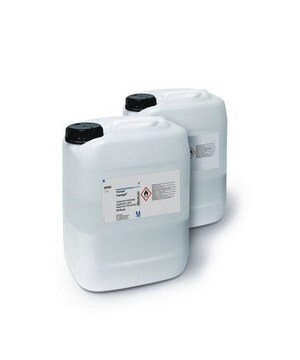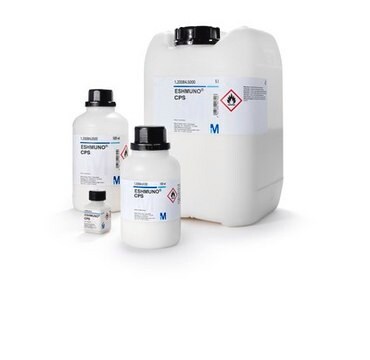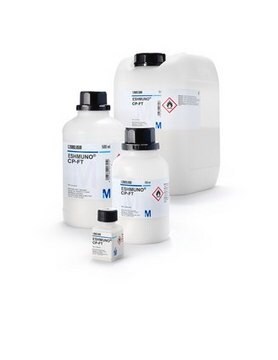1.16890
Fractogel® EMD SO3⁻ (S) Resin
Sinônimo(s):
Fractogel® EMD SO₃⁻ (S)
About This Item
Produtos recomendados
ligand
(Sulfoisobutyl)
Nível de qualidade
100
400
descrição
strong cation exchanger, suspension in 20% ethanol and 150 mM NaCl (20-40 µm)
esterilidade
sterile (Caustic Stable)
Ensaio
≥90% (HPLC)
forma
resin
fabricante/nome comercial
Calbiochem®
Parâmetros
8 bar max. pressure
80 cm/hr flow rate
Grupo ativo da matriz
methacrylate
tamanho médio de partícula
20-40 um μm
capacidade
150 mg binding capacity (lysozyme/ml of resin)
temperatura de transição
flash point 35 °C (Does not sustain combustion.)
densidade
1.43 g/cm3 at 20 °C
densidade volumétrica
1000 kg/m3
técnica de separação
strong cation exchange
Condições de expedição
ambient
temperatura de armazenamento
2-8°C
Procurando produtos similares? Visita Guia de comparação de produtos
Embalagem
- 1.16882.0100: Fractogel® EMD SO3- (S) Resin 100ml
- 1.16882.0010: Fractogel® EMD SO3- (S) Resin 10ml
- 1.16882.0500: Fractogel® EMD SO3- (S) Resin 500ml
- 1.16882.5000: Fractogel® EMD SO3- (S) Resin 5L
Advertência
Nota de análise
Microscopic evaluation: Uniform spherical particles,no agglomerates,no fines
Extractable matter (water): ≤ 0.05 %
Cerium: ≤ 10 µg/g
Pressure drop(column: ID=1.6 cm, L=10 cm at 5 ml/min): ≤ 5.0 bar
Particle size (d10): 20 - 28 µm
Particle size (d50): 24 - 34 µm
Particle size (d90): 28 - 38 µm
Colony forming units (TAMC + TYMC): ≤ 100 CFU/ml
Endotoxins: ≤ 1.00 EU/ml
Protein binding capacity (lysozyme): 120 - 180 mg/ml
Functional test (c:d): ≤ 0.15
Functional test (b:a): ≤ 0.15
Functional test: Separation chymotrypsinogen A, cytochrom C and lysozyme
Informações legais
Palavra indicadora
Warning
Frases de perigo
Declarações de precaução
Classificações de perigo
Flam. Liq. 3
Código de classe de armazenamento
3 - Flammable liquids
Classe de risco de água (WGK)
WGK 1
Ponto de fulgor (°F)
95.0 °F
Ponto de fulgor (°C)
35 °C
Certificados de análise (COA)
Busque Certificados de análise (COA) digitando o Número do Lote do produto. Os números de lote e remessa podem ser encontrados no rótulo de um produto após a palavra “Lot” ou “Batch”.
Já possui este produto?
Encontre a documentação dos produtos que você adquiriu recentemente na biblioteca de documentos.
Nossa equipe de cientistas tem experiência em todas as áreas de pesquisa, incluindo Life Sciences, ciência de materiais, síntese química, cromatografia, química analítica e muitas outras.
Entre em contato com a assistência técnica



